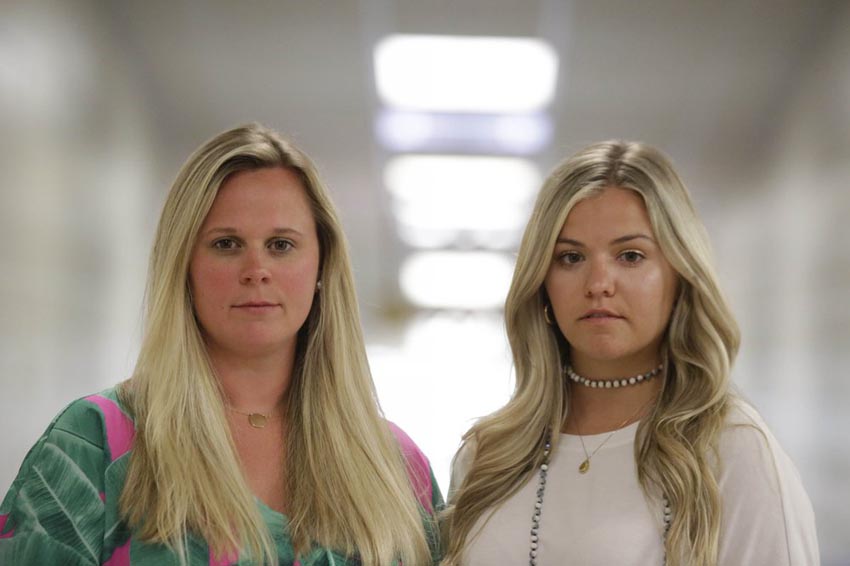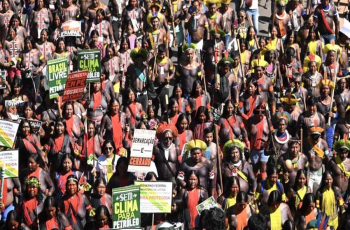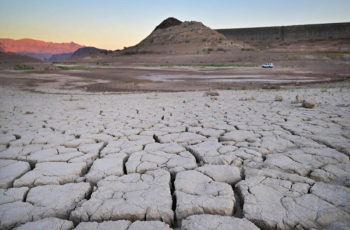Schools Nationwide Brace For Cuts From New Financial Crisis
“In Arizona, the first thing that they bring up in the Legislature when we have a budget shortfall is to cut education and balance it on the backs of our kids,”

First grade teachers, Ellie Morgan, 25, left, Hannah Sprayberry, 28, right, pose for a portrait, and say they are taking around 5 per-cent pay cut on Thursday, May 28, 2020, in Fort Oglethorpe, Ga. With sharp declines in state spending projected because of the economic fallout from the COVID-19 pandemic, America's more than 13,000 local school systems are wrestling with the likelihood of big budget cuts. Photo: AP Photo/Brynn Anderson
ATLANTA (AP): It was during the Great Recession when Catoosa County first shortened its school year, from 180 to 175 instructional days, as it began years of furloughs due to budget cuts. As a result of the coronavirus pandemic, the next school year will be shorter still, with only 170 classroom days.
The 10,000-student system in northern Georgia will also be sending its 1,700 employees home for 10 unpaid days to help make up a projected $12.6 million budget gap.
“It was a great day when we didn’t have furloughs anymore,” Catoosa County Superintendent Denia Reese said. “It’s disheartening right now because I see it happening again.”
The financial crisis wrought by COVID-19 has left America’s more than 13,000 school systems wrestling with the likelihood of big budget cuts. In some, it already has spoiled dreams of expanded funding and teacher pay raises. Advocates are pushing for more federal aid to schools as researchers warn budget woes could lead to massive teacher layoffs — and less learning.
The cuts will add to the strain on districts like Catoosa County that never recovered fully from the 2008 recession, which led to sharp staffing declines at American public schools over a period of rising student enrollment.
With cuts expected to a budget that relies on the state for over half its funding, Reese and school board Chairman Don Dycus said the shortened year and accompanying 5.5% reduction in teacher pay were the best of bad options. Dycus said board members didn’t want to raise property taxes because of residents’ economic troubles. And Reese said it was important to avoid laying off employees because she wants a full workforce when students return to help them overcome this year’s lost instructional time.
“Right now we need every teacher and every paraprofessional we can afford to be ready when the kids get here because there are going to be gaps,” Reese said.
Educators bracing for cuts include those who pushed for better wages and more school resources in a national groundswell of activism that began with a 2018 teacher walkout in West Virginia, a movement that had roots in some states in austerity measures imposed during the last recession.
In Nevada, which was among the states that saw teacher rallies, lawmakers last year approved a significant increase in education spending and 3% raises for teachers. Now they’re talking about a 4% budget cut before the current year is over, and another cut of 6% to 14% in the year beginning July 1. That could mean giving up last year’s hard-won gains and then some.
The National Education Association and the American Federation of Teachers are advocating for additional federal aid for state budgets and education. Both backed the House Democrats’ $3 trillion relief proposal, an effort Senate Republicans and President Donald Trump dismissed as bloated when it passed on May 15.
AFT President Randi Weingarten said schools will need more money, not less, to protect students and teachers from COVID-19 and help students.
“If you don’t have this, states are going to be doing huge budget cuts for schools, which would necessarily mean more layoffs and fewer services,” Weingarten said. “At the same time, this is a bridge year when kids have more instructional needs and need more services.”
If spending drops 15% this year, public schools could employ 319,000 fewer teachers nationwide, according to Michael Griffith, a senior fellow with the Learning Policy Institute in California who says that number accounts for federal relief already appropriated to schools.
That would mirror the experience of the Great Recession, which saw public school employment fall by almost 300,000 from 2008 through 2012, according to a study published last year. Pew Charitable Trusts researcher Barb Rosewicz said that state spending per student still hasn’t reached pre-recession levels in 24 states after adjusting for inflation, according to the most recent data.
Reduced funding has consequences. Financial pressure has led more than 550 districts nationwide to squeeze instruction into four-day weeks. And a study last year found spending cuts during the recession were associated with lower academic achievement, especially in poorer districts. A quarter of expected learning was wiped in out in the hardest-hit districts, compared to districts where spending fell the least.
In Arizona, which had some of the lowest-paid teachers in the country, lawmakers promised 20% raises after teachers went on a five-day strike in 2018. State Sen. David Livingston, a Republican, said the raises are not in jeopardy but other education-related expenses like maintenance and new school construction could be on the chopping block.
Kelly Wendland Fisher, a kindergarten teacher and organizer of Arizona Educators United that led the strike, still has a whopping 25 kindergartners in her suburban north Phoenix classroom and spends nearly $3,000 out of her own pocket each year for supplies. She fears difficult years ahead.
“In Arizona, the first thing that they bring up in the Legislature when we have a budget shortfall is to cut education and balance it on the backs of our kids,” Fisher said.
-

Indigenous people march in Brazil to demand land demarcation
2024-04-24 -

Talks on global plastic treaty begin in Canada
2024-04-24 -

Colombian court recognizes environmental refugees
2024-04-24 -

Asia hit hardest by climate and weather disasters last year, says UN
2024-04-23 -

Denmark launches its biggest offshore wind farm tender
2024-04-22 -

Nobel laureate urges Iranians to protest 'war against women'
2024-04-22 -

'Human-induced' climate change behind deadly Sahel heatwave: study
2024-04-21 -

Moldovan youth is more than ready to join the EU
2024-04-18 -

UN says solutions exist to rapidly ease debt burden of poor nations
2024-04-18 -

Climate impacts set to cut 2050 global GDP by nearly a fifth
2024-04-18
